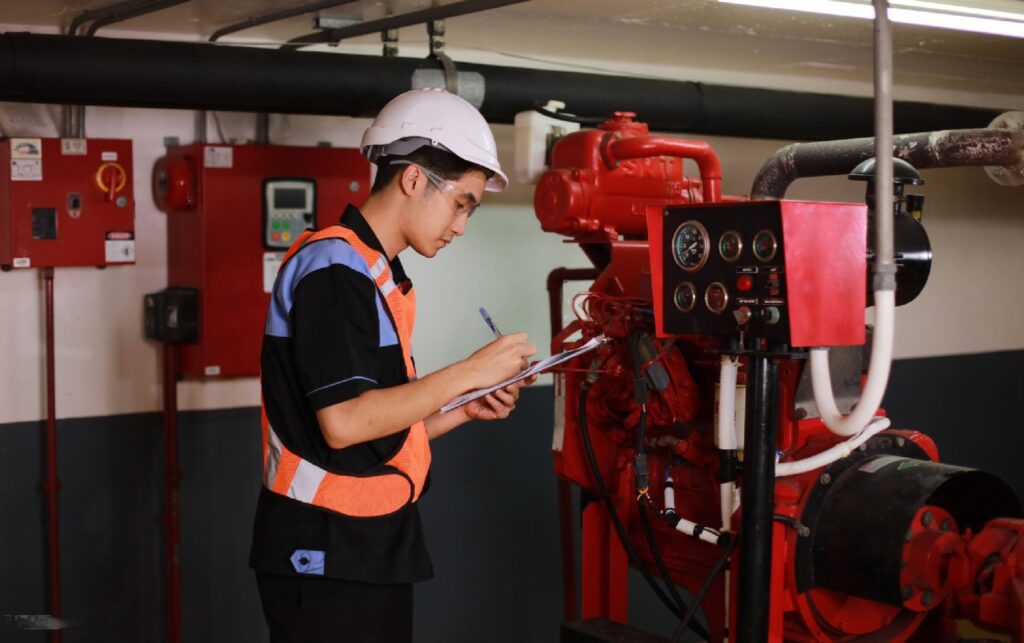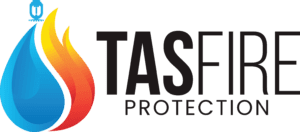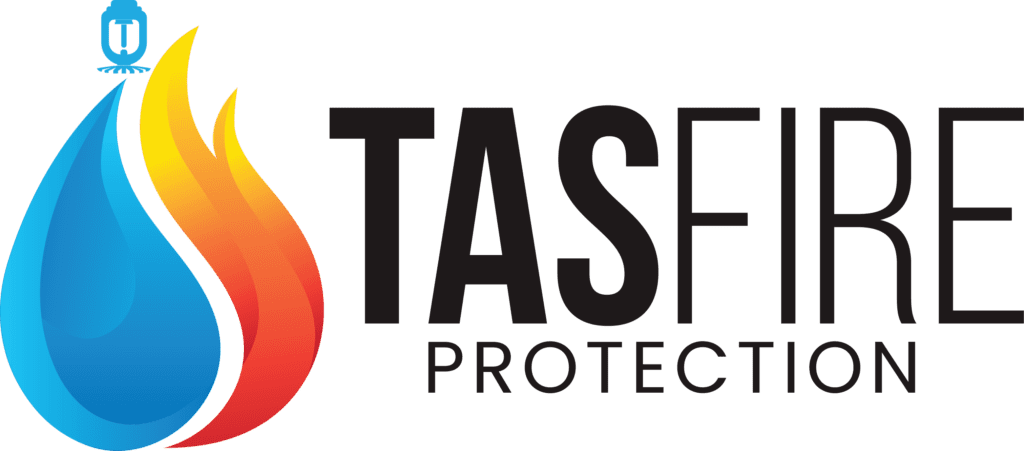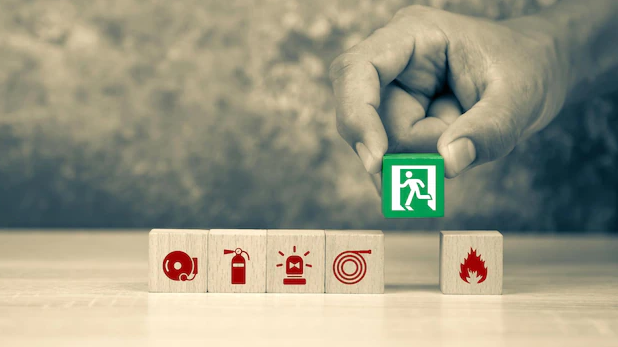Fire Safety Tips: A Fire Safety Checklist…
Fire safety and fire safety system is an essential aspect of the workplace in order to prevent harm and property damage caused by flames. As we all know, different workplaces deal with different kinds of flammable materials. Every safety rule and regulation at work must be followed to ensure complete protection against danger.All workers should be aware of fire hazards caused by heat, fuel, oxygen, and other chemicals in the workplace. Special training has to be given to control the spread of a fire, thereby reducing the overall loss.
Developing and implementing fire safety protocols in the workplace is not only mandated by law but also vital to the protection of everyone who may be involved in the building during a fire emergency. Employers and commercial property owners are responsible for enforcing essential fire safety regulations in the workplace.
What Exactly Is Fire Safety?
Fire safety is the planning and maintenance of an infrastructure designed to reduce the risk of fire or slow down the spread of fire when one does break out. Certain materials and guidelines must be followed in order to implement such an infrastructure. Wearing flame-resistant protective apparel, using fire-resistant construction materials, taking preventative measures, receiving fire safety training, and much more are all included in the concept of fire safety.
What is the NFPA Standard?
The National Fire Protection Association (NFPA) has worked to prevent the loss of life, destruction of property, and monetary loss brought on by fire and related risks since its founding in 1896. The passionate non-profit NFPA organisation believes in preserving networks of people that support the accomplishment of their mission and goals.
The NFPA creates more than 300 consensus norms and standards in an effort to reduce the danger and effects of fire. Over 260 technical committees comprised of more than 10,000 volunteers establish and administer the NFPA rules and standards that are accepted and employed all over the world.
Some of the general NFPA rules that must be followed include:
- Verify that the fire codes are followed for stairs, markings, signage, etc.
- Ensure that fire risk assessments are required when modifying a building or equipment.
- Store and maintain flammable materials properly.
- Installation of automatic or semi-automatic fire alarm systems and fire detection systems.
- Regular instruction to users has to be given in assembly, emergency evacuation, fire extinguisher use, etc.
- Collaborating with the local fire department to frequently conduct fire mock drills.
What Factors Will Influence Fire Safety in 2023?

The owner of the building or workplace should be responsible for making sure the building’s fire protection systems are up to code, inspected, and functioning properly. They must prioritize equipment maintenance and inspections in order to keep the equipment secure and prevent property damage.
Following NFPA guidelines and local laws will increase the building’s security through modern fire safety safeguards. You can prioritize which systems to examine and what to look for when examining them with the help of the comprehensive checklist provided below.
- Fire Extinguishers
Fire extinguishers are one of the main fire suppression systems that are used to put out a small fire. Since oxygen helps a fire spread, the substance that the fire extinguisher releases when it opens and sprays will hose down the flame by preventing a chemical reaction with oxygen. Here are some guidelines to follow for the regular fire inspection of your fire extinguisher.
- To ensure compliance with your local fire code, you must ensure that your fire extinguishers are installed properly.
- Be aware when selecting the appropriate fire extinguisher for your industry, the installation’s height, and the distance from any potential hazards.
- Always check that your extinguishers are still in good condition and that your inspections are accurate.
- If your extinguisher is housed in a cabinet or other compartment, make sure the compartment is accessible.
- Regularly inspect each extinguisher for physical damage, such as canisters, hoses, or other components.
Extinguishers aren’t designed for a huge fire spread, but to put out a fire if the flames are contained in a small area and are shorter than you.
- Fire Sprinkler System
For commercial applications and high-risk storage situations, fire sprinkler systems are the best fire protection options. Buildings need them so that fires can be put out before they spread too far. Sprinkler heads, control systems, and hoses are the main parts of the fire sprinkler system. Let’s go through some regular checklists to follow.
- During fire installation, make sure the distance between the wall and the sprinkler head is properly maintained and that the sprinkler head provides enough coverage for the particular room.
- Building owners should check the control valves regularly. This will make sure that the fire sprinklers work properly.
- Manual testing has to be performed to prevent sprinkler head leakage or damage.
- Put a corrosion-resistant solution in the sprinkler head to keep rust from building up directly on the tip.
- By running the sprinklers with different water pressures, you can test how well the sprinkler system works.
- Kitchen Fire Suppression System
The kitchen is a restaurant’s most crucial and critical section. The workers are crammed together and work with sharp objects and oils. Because the employees worked quickly, even a tiny leak of oil or water into the gas will start a fire.
Commercial kitchens need a kitchen fire suppression system because they have appliances with high temperatures, like broilers, fryers, and cooking ranges.
- Proper inspection and maintenance are the key factors for the proper working of any system. Follow the given guidelines for safety:
- Your commercial kitchen’s fire suppression system will work best if you clean the hood and ducts regularly.
- Proper training has to be given to the employees in order to maintain the entire system.
- Commercial Fire Alarms and Detectors
A quick introduction is not necessary for commercial fire alarm systems. Fire alarms and smoke detectors are the most common and essential fire safety devices for any building.
Let’s go through the proper maintenance and routine checklist for the fire alarm system:
- Each alarm should also be tested at regular intervals for battery replacement.
- Ensure that the appropriate alarms are installed properly throughout your building.
- Check the fire code for the fire alarms and detectors.
- The dust, insect filth, and other lint presents in the smoke detectors can trigger a false alarm and have a negative impact on the sensitivity of the entire unit. The entire device should be cleaned on a regular basis.
- Keep the alarm at a proper height so that sensors can detect the fire properly.
- Signage for Fire Safety
The signs are intended to promote safe behavior, warn of risks, and provide important information that must be followed during a fire break. According to the layout of the building, fire safety signage must be placed correctly in commercial buildings. The signage must be positioned consistently on each floor, and you must inspect the item for physical damage and replace it as necessary. Read out the blog Fire Safety Signage to know more about it.
- Emergency Exit Light
The proper placement of the emergency lighting system helps people to get the proper way during a firebreak. For maintenance and inspection to be done properly, you should follow the guidelines given below.
- Make sure you examine your inspection and confirm that your exit lights are up-to-code.
- Make sure the exit lights are easily visible, even under hazardous conditions.
- Regular inspection of the bulbs and batteries.
- Photo luminescent Lighting and Egress
Photo luminescent egress lighting is widely used since it doesn’t require electricity and emits light properly in a dark environment. This is critical during a fire, and it is, therefore, necessary to meet all fire department specifications. Always check the markings for physical damage and up-to-date inspections for the light they emit.
- Log Books for Fires
A professional fire log book contains information on access control systems, control panels, detectors, and alarm devices, as well as the most recent update on fire alarm codes. In this logbook, a safety engineer can record all inspection and maintenance test details. The NFPA demands a log book for a business to track all the information on the safety systems.
Wrapping Up
A building owner’s first priority should be to protect his or her property and employees. To maintain this, they must maintain and adhere to a routine checklist and guidelines for their work spaces. The electrical contractors also have a major role in this . Some of the guidelines were mandated by the NFPA, and other inspections can be performed with the assistance of a premier fire and life safety specialist.
TAS Fire Protection provides hassle-free total fire protection for your building by maintaining and inspecting fire extinguishers, fire alarms, and fire suppression systems, among other things. Trust us, and we will provide complete fire protection for your building and people. Stay safe and secure in 2023!
Contact Us (905-870-7779) for a Free Consultation!
—

About TAS Fire Protection
TAS Fire Protection offers comprehensive and cutting-edge fire, security, and electrical services to clients with residential, commercial, industrial, or high-rise properties. Our team of highly skilled professionals has years of experience in installing, maintaining, and inspecting fire, security, and electrical systems and equipment.
> Learn More

